
|

|
 | |
|
An up close and personal interview with U.S. Air Force Veteran and Togetherweserved.com Member:
Sgt Richard G. King U.S. Army Air Corps (1943-1946)
PLEASE DESCRIBE WHO OR WHAT INFLUENCED YOUR DECISION TO JOIN THE AIR FORCE?
When the Japanese bombed Pearl Harbor, I was working on a Minnesota farm. I wanted to join the Army Air Force but since farming was considered essential for the war effort, I was denied.
A month or so later, in 1942, I signed up with the Minnesota Aircraft School  where I learned sheet metal layout, template development, blue print reading and assembly work, as well as riveting. where I learned sheet metal layout, template development, blue print reading and assembly work, as well as riveting.
After completing my training, I drove to San Diego, California where I got a job working with Consolidated Aircraft Company. This company made the B-24 and the PBY-5 "Catalina". I worked on a flying boat called the "Coronado" PBY-2Y3. My job was mostly installing the "skin" sheet aluminum on the bottom of the aircraft. (Photo of the kind of aircraft I worked on at Consolidated Aircraft in San Diego, the "Coronado", PB2Y.)
When my dad became ill, about 5 months after I began work in San Diego, I drove back to Minneapolis. The journey took 4 days and 3 nights at 44 mph all the way home, due to government rationing to help save tires. Rationing included food and other necessities for which there is a shortage, including materials needed for the war effort such as leather shoes, rubber, clothing and gasoline.
I again volunteered for the draft, but was again turned down as they insisted that I was still working on a farm. A short time later, I found my draft notice in a Stillwater newspaper. I thought that this was the happiest moment of my young life. We young men were very naive.
WHETHER YOU WERE IN THE SERVICE FOR SEVERAL YEARS OR AS A CAREER, PLEASE DESCRIBE THE DIRECTION OR PATH YOU TOOK.
I entered the service on May 11, 1943 and was sent to Fort Snelling, Minneapolis to register, receive shots, get issued clothing, and so forth. From there, I went to Lincoln Army Air Force, Nebraska for basic training.
Following basic training, I went to Miami, Florida to begin the Qualified  Air Cadets (QAC) program and assignment to a training college. I was assigned to Coe College in Cedar Rapids, Iowa for further training in a program that had many similarities to that of West Point. I was there from September 14, 1943 to December 22, 1943 as part of 306th Combat Crew Detachment (CTD). Air Cadets (QAC) program and assignment to a training college. I was assigned to Coe College in Cedar Rapids, Iowa for further training in a program that had many similarities to that of West Point. I was there from September 14, 1943 to December 22, 1943 as part of 306th Combat Crew Detachment (CTD).
We were then sent to Santa Ana Pre-Flight School in California where we were to be assigned to pilot, navigator or bombardier school. However, because these slots had been filled due to a surplus, they only kept a few cadets. The balance of us was to be trained in more needed areas. This was quite a shock to me.
In early 1944, some of us were sent to Lowry Field near Denver to be trained as an Armor Gunner (MOS-612). At the Airplane Armorer School, I learned to use guns from 30 calibers to 75 calibers. I graduated May 21, 1944.
My group, 22 men, was put on a train heading for the East Coast. We knew that we were to be sent to Italy to serve with the 12th Air Force as armorers. But my name was pulled and I was ordered to report to B-17 turret and sight school at Ardmore Army Airfield, Oklahoma.
After I was trained on all turrets for the B-17, I was sent to join a B-17 crew at Nellis Army Air Field and then off to Las Vegas Army Air Field to complete Army Air Force Flexible Gunnery School. I was in Student Squadron 4, Class 44-44 and completed training on October 20, 1944.
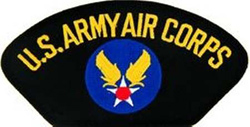 My next training was in Turret and Sight Training (B-17), Crew # 317, 222nd Army Air Forces Base Unit (Combat Crew Training School-CCTS), 2nd Air Force, Ardmore AAF, Oklahoma, from December 1944 to April 1945. We spent a great deal of time here in practice bombing runs and fighting off fighters (using 16 mm gun cameras). It was here, as the war in Europe came to a close, that I left the B-17 program and went to a staging base to train in the B-29 for use in the Pacific Theater. My next training was in Turret and Sight Training (B-17), Crew # 317, 222nd Army Air Forces Base Unit (Combat Crew Training School-CCTS), 2nd Air Force, Ardmore AAF, Oklahoma, from December 1944 to April 1945. We spent a great deal of time here in practice bombing runs and fighting off fighters (using 16 mm gun cameras). It was here, as the war in Europe came to a close, that I left the B-17 program and went to a staging base to train in the B-29 for use in the Pacific Theater.
We were sent to Pyote Army Air Field in Texas from May into August of 1945. This was for the Central Fire Control Gunner Training (B-29). We spent inordinate hours flying missions over various parts of the States, Cuba, the Atlantic, and even over Mexico. Photo is of my B-29 Crew #833, 236th AAF Combat Crew Training Squadron (VH) at Pyote (Rattlesnake) AAF. May-June 1945. That's me top row, second from the left.
From there, we went into staging for Guam at Topeka AAF, Topeka, Kansas when the War in the Pacific ended on August 15, 1945 following with the dropping of the a-bombs on Japan. We spent time at various bases over the next few months: Davis Monthan Field with the 484th AAF Base Unit, and then to Pratt AAF in Kansas where we were removed from air crews. We moved on to Pinecastle AAF in Orlando to help operate the base with so many guys being discharged, most of whom had been in the South Pacific. They were a tough bunch.
I was then sent to the Reception and Separation Center, Camp McCoy, Wisconsin where on 13 February 1946 I received my honorable discharge.
Like all Americans and our Allied partners, I felt exhilaration with the war over in Europe and the Pacific. I must admit it was also a bit of a disappointment in having had so much training and not being able to use it. Nevertheless, I was thankful that we never had to bomb any innocent women and children, though it took quite a while for me to realize this.
DID YOU PARTICIPATE IN COMBAT OPERATIONS? IF SO, COULD YOU DESCRIBE THOSE WHICH WERE SIGNIFICANT TO YOU?
 All of my training in the States was focused on preparing me for combat overseas but with the end of the War in Europe and with the dropping of the atomic bombs on Japan, the need for my service ended. All of my training in the States was focused on preparing me for combat overseas but with the end of the War in Europe and with the dropping of the atomic bombs on Japan, the need for my service ended.
Nevertheless, I had some incredible experiences flying as part of a crew on both the B-17 and then the B-29.
OF ALL YOUR DUTY STATIONS OR ASSIGNMENTS, WHICH ONE DO YOU HAVE FONDEST MEMORIES OF AND WHY? WHICH ONE WAS YOUR LEAST FAVORITE?
I had lots of interesting experiences, particularly while flying. One particular memory could easily have been disastrous. While flying out of Ardmore, we were on a practice bombing run over Ada, Oklahoma. It was a winter morning, and as we made our turn to the target, the bombardier accidentally dropped a bomb on a small chemical plant. It was a pretty scary experience, especially as we all had to go through courts martial as a result. The bombardier 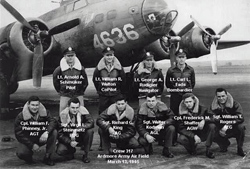 claimed he had gotten a cramp in his oxygen hose and had passed out for a few minutes. We had dropped the bomb at 0745, and the plant was set to open at 0800. It was a fortunate no one was injured. claimed he had gotten a cramp in his oxygen hose and had passed out for a few minutes. We had dropped the bomb at 0745, and the plant was set to open at 0800. It was a fortunate no one was injured.
On another training mission, the radio operator and the ball turret gunner were sitting in the radio room of the B-17. They were not informed that we were going up to 20,000 feet and had not put on their oxygen masks. They passed out from hypoxia. I managed to hook them up on the emergency oxygen supply and they were okay in a short time. This happened just prior to the war ending in the European Theater of Operations. Good news all around.
OF ALL THE MEDALS, AWARDS, QUALIFICATION BADGES OR DEVICE YOU RECEIVED, PLEASE DESCRIBE THE ONE(S) MOST MEANINGFUL TO YOU AND WHY?
I went through a lot of training in preparation to being a gunner on the B-17 and B-29.
Although I did not get to use those skills in combat, I take great pride in having achieved the gunner badge on both aircraft.
WHICH INDIVIDUAL(S) FROM YOUR TIME IN THE MILITARY STAND OUT AS HAVING THE MOST POSITIVE IMPACT ON YOU AND WHY?
I believe my family has had the most profound influence and impact upon my life. They have been constant in their support and regard.
This was true while I was in the military and especially true when I entered the post-war work world.
CAN YOU RECOUNT A PARTICULAR INCIDENT FROM YOUR SERVICE WHICH MAY OR MAY NOT HAVE BEEN FUNNY AT THE TIME, BUT STILL MAKES YOU LAUGH?
The funniest incident that comes to mind occurred on a training mission aboard a B-17. We always had a pail aboard to use as a toilet. The rule was whoever used it first would have to empty it when we landed, whether colonel or private.
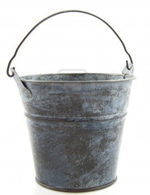 On this occasion, I was using a large camera and taking photos of our practice bomb drops. I removed the camera from the opening in the floor which was about 10" square. All of a sudden, a spray of fluid was blowing all over. On this occasion, I was using a large camera and taking photos of our practice bomb drops. I removed the camera from the opening in the floor which was about 10" square. All of a sudden, a spray of fluid was blowing all over.
One of the gunners called the pilot on his throat mike about the "problem". The pilot went ballistic, thinking that it was gas. He instructed us all to put on our chutes and prepare to bail out.
I immediately called the pilot to tell him that Walt C. ("Bulldog") Kodman, our ball turret gunner, had urinated, so, it seemed, he wouldn't have to empty the pail. What had happened was the "fluid" had followed the skin of the plane and come into the bomb bay through the small opening.
You can imagine this as a topic of conversation and ribbing for some time.
WHAT PROFESSION DID YOU FOLLOW AFTER YOUR MILITARY SERVICE AND WHAT ARE YOU DOING NOW? IF YOU ARE CURRENTLY SERVING, WHAT IS YOUR PRESENT OCCUPATIONAL SPECIALTY?
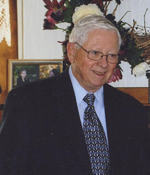 Following the service, I worked for about six years in the heating and air conditioning business as an assistant manager. After that, I went into the heating and air conditioning wholesale business in St. Paul, Minnesota. Following the service, I worked for about six years in the heating and air conditioning business as an assistant manager. After that, I went into the heating and air conditioning wholesale business in St. Paul, Minnesota.
At age 49, I left that business and started up a fabricating machinery business in St. Paul. I was the vice president, working with three other former employees. This business was particularly successful. Now, two of my sons are now running it along with the other partners' sons.
I retired in 1991 as president of the company. My wife and I have the good fortune of having 10 children and 31 grandchildren and great-grandchildren.
WHAT MILITARY ASSOCIATIONS ARE YOU A MEMBER OF, IF ANY? WHAT SPECIFIC BENEFITS DO YOU DERIVE FROM YOUR MEMBERSHIPS?
 I am a member of the Commemorative Air Force, assisting them with manuals and work sheets for the turrets of the B-17 and B-29. I am a member of the Commemorative Air Force, assisting them with manuals and work sheets for the turrets of the B-17 and B-29.
The Commemorative Air Force, formerly known as the Confederate Air Force, is a non-profit organization dedicated to preserving and showing historical aircraft at airshows primarily throughout the U.S. and Canada.
IN WHAT WAYS HAS SERVING IN THE MILITARY INFLUENCED THE WAY YOU HAVE APPROACHED YOUR LIFE AND YOUR CAREER?
I learned a great deal in the military. Almost everything that I have done since the service has made life much more interesting.
 Photo is one of me aboard the B-17 "Aluminum Overcast" on 16 July 2009. I was a guest of the Experimental Aircraft Association's 2009 Salute to Veterans for a 30 minute flight. Rochester, Minnesota. Photo is one of me aboard the B-17 "Aluminum Overcast" on 16 July 2009. I was a guest of the Experimental Aircraft Association's 2009 Salute to Veterans for a 30 minute flight. Rochester, Minnesota.
BASED ON YOUR OWN EXPERIENCES, WHAT ADVICE WOULD YOU GIVE TO THOSE WHO HAVE RECENTLY JOINED THE AIR FORCE?
Learn all that you can. It will serve you well while in the military service and for many years after when working in a civilian career.
Also, with the advent of the computer and technology, there are no limits to what you can be and do in the service.
IN WHAT WAYS HAS TOGETHERWESERVED.COM HELPED YOU REMEMBER YOUR MILITARY SERVICE AND THE FRIENDS YOU SERVED WITH.
 I enjoy hearing from other members. Most of all, I would love to find anyone who knew my crew members or who have been to the many bases where I served during the War. I enjoy hearing from other members. Most of all, I would love to find anyone who knew my crew members or who have been to the many bases where I served during the War.
I especially value how Together We Served.com is set up for us to tell our story while serving in the military. It is the only place I know of where the average person who served in the military has their history displayed.
|
 Sgt Richard G. King
Sgt Richard G. King
|
|
Share this Voices Edition on:


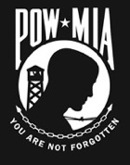
 |
|
TWS VOICES
TWS Voices are the personal stories of men and women who served in the US Military and convey how serving their Country has made a positive impact on their lives. If you would like to participate in a future edition of Voices, or know someone who might be interested, please contact TWS Voices HERE.
This edition of AirForce Voices was supported by:
AirForce.Togetherweserved.com
For current and former serving Members of the United States Air Force, Army Air Corps, Air Force Reserve and Air National Guard TogetherWeServed is a unique, feature-rich resource helping Airmen reconnect with lost Wingmen, share memories and tell their Air Force story.
To join AirForce.Togetherweserved.com, please click HERE.
|
|